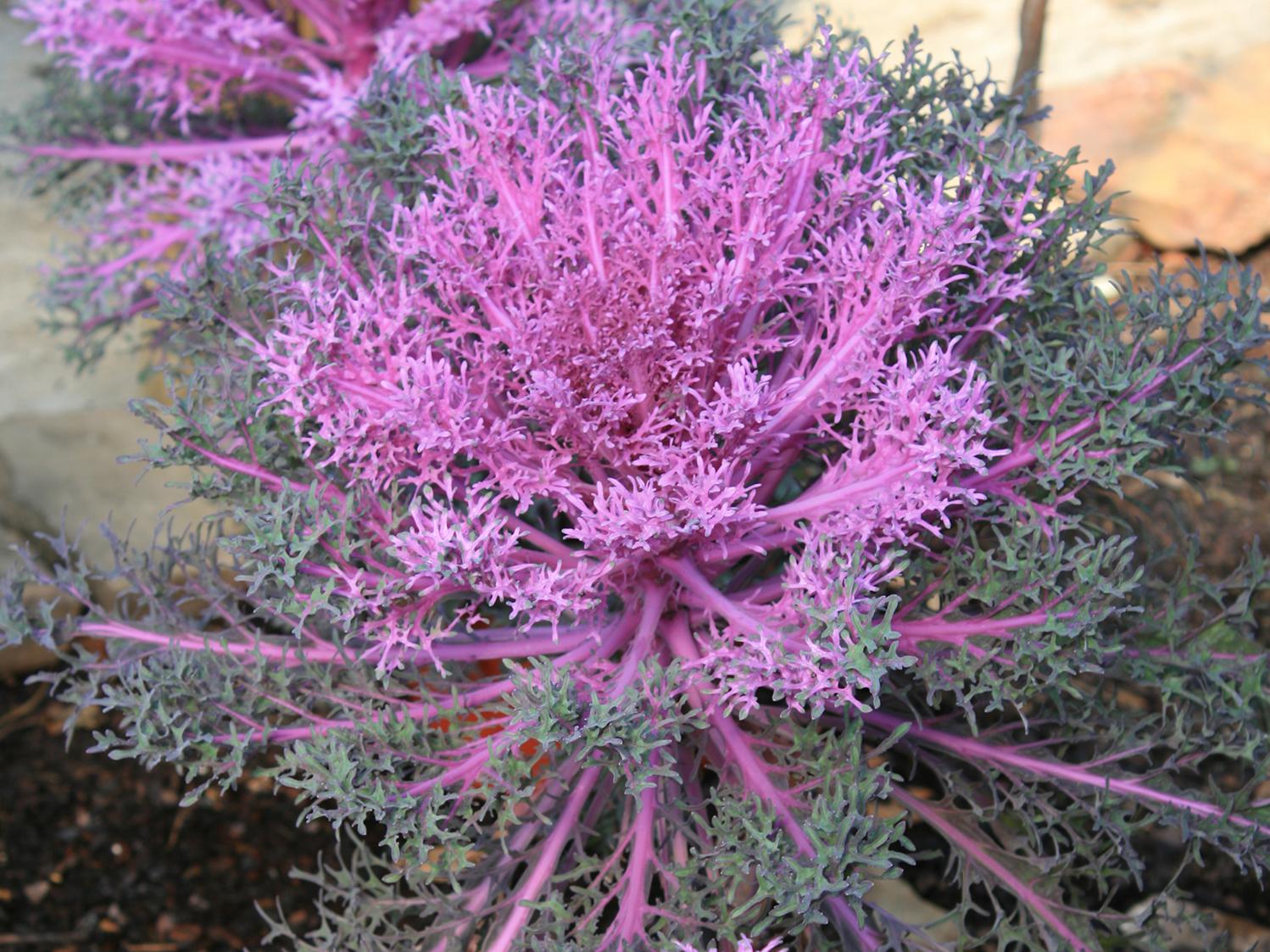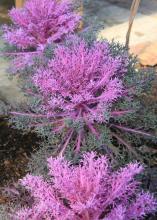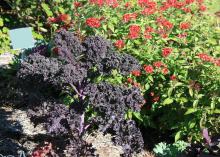Information Possibly Outdated
The information presented on this page was originally released on January 22, 2018. It may not be outdated, but please search our site for more current information. If you plan to quote or reference this information in a publication, please check with the Extension specialist or author before proceeding.
Fancy leaf kale named MS Medallion winner
Garden catalogs start piling up by the front door at this time of year, and our two recent cold spells gave me time to look at them. I’ve had the best time flipping through these catalogs and dreaming about all the new plants I’m going to grow this year.
January is also when we learn the Mississippi Medallion Winners for the year. The honorees were announced last week, and what a great group of plants they are.
In the past, I’ve always talked about all the Mississippi Medallion Winners in the same column. But I’m going to change things up this year and devote an entire Southern Gardening column to each selection. So, let’s get going.
The first 2018 selection is fancy leaf kale, which is actually an old favorite that we need to grow more of. This plant is absolutely one of the best choices for reliable late fall, winter and spring color.
Now, I’m not talking about the regular vegetable garden varieties, though these are quite pretty in their own right. The fancy leaf types have been bred for a vibrant display of dazzling colors that range from snowy white to reds, pinks and purples. They have ruffled, textured leaves and feathered leaf edges.
When you go shopping, many of the selections in garden centers may seem, well, a little green, and you may ask, where is the color? As the temperatures drop, you’ll see that color develop.
I have some favorite varieties. Redbor kale is an outstanding choice. Its frilly leaf color is a solid purple-red that intensifies as the weather cools during the winter. Redbor is also a long-lived plant that I’ve seen still looking good in July and August in south Mississippi.
Red Chidori kale is another good selection that forms loose heads that are extremely colorful. New foliage is a bright magenta-red that transitions to a darker green while the veins maintain their reddish color. This variety has performed well in Mississippi State University trials at Poplarville and Crystal Springs.
Peacock Red kale lives up to its namesake. The foliage is displayed in beautiful sprays of leaves with rose-red centers and green outer leaves. Peacock Red kale has been a must-have in my landscape the last couple of years.
A newer kale I’ve been observing in our trial gardens is Coral Queen. This kale is a robust plant featuring leaves that are deeply notched and feathery. The foliage has a bright-red center with purplish-green edges.
Although I’ve been focusing on the red types, the white and pink selections are just as beautiful.
Good soil drainage is a must for kale, and raised beds are great for in-ground ornamental kale. Add composted organic matter at planting to increase drainage.
Kale likes consistent soil moisture, and that layer of mulch can help conserve soil moisture. Many home gardeners don’t think about drought conditions existing in the winter, but cold fronts can be relatively dry, allowing soil moisture to deplete rapidly
Don’t neglect fertilizing the plants, as kale is actually a fairly heavy feeder. I like to add a tablespoon of a good, slow-release fertilizer into each planting hole to get the plants off to a great start. I use water-soluble fertilizer on a monthly schedule to keep the plants healthy and growing strong.
Although you can’t buy these kale selections from nurseries and garden centers, you still have plenty of time to start a spring crop from seed at home. Take one of those seed catalogs and order some Fancy Leaf Kale to enjoy this spring.





